Fiddle leaf fig care can be complex and overwhelming, especially if you are a first-time plant owner. But never fear! This article will teach you everything you need to know about caring for these beautiful plants.
Good fiddle leaf fig care makes your plant stronger and more resistant to disease. But poor care creates a downward spiral of sickness and problems. The trick is to learn the basics of care and provide consistency, and know what problems to watch out for along the way.
Whether you’re a brand new plant parent or if you’re a seasoned houseplant enthusiast, here’s exactly how to buy and care for a fiddle of your own, from where to find one to how often to water fiddle leaf fig trees to treating issues before they become a major problem.
Should You Get a Live Or Fake Fiddle Leaf Fig Tree?
Some fiddle fans decide to opt-out of fiddle leaf fig care altogether and choose a fake tree instead!
There are major advantages to this, of course. Artificial fiddles require no watering, fertilizing, pruning, drainage, or potting soil. They don’t need light to thrive, so you can place them anywhere in your living space, and they can be a good choice if you have pets who like to snack on your houseplants. They’re resistant to pests and pathogens, and the most upkeep they require is a little dusting.
On the other hand, live fiddles have their advantages too! Caring for fiddles (and plants in general) can prove very fulfilling, and it’s incredibly rewarding to watch these trees grow and produce new leaves under your care!
Fiddles can also improve indoor air quality. You can propagate them to create more fiddles to keep or give as gifts. There’s also something magical about live plants in an indoor space, as they have a certain feeling of life, movement, and vitality about them that you just can’t get with a fake tree. It’s difficult to explain, but it’s the difference between strolling through a greenhouse and perusing the silk plant section at your local craft store. It’s a completely different feeling!
Whether you’re ready for a real fiddle or if you want to opt for an artificial version, we’ve got you!
Artificial Fiddle Leaf Fig Trees
Artificial plants have come a long way in the past several years, and there are many fake fiddles on the market that can fool even the most dedicated fiddle fan at first (or even second) glance!
Here are a few of our favorites:
4ft Fiddle Leaf Fig Tree Artificial
Live Fiddle Leaf Fig Tree
Ready to try your hand at a fiddle leaf fig care with a real tree?
Fiddles are fairly easy to find. You can often buy them at your local nurseries or chain stores like Home Depot, Lowes, Costco, IKEA, and even grocery stores like Whole Foods!
You can also buy fiddles online. Check sites like Etsy, Ebay, and even Facebook Marketplace or your local Craigslist. You can also find fiddles on Amazon! We also love Houseplant Shop.
Here are a few of our favorite Etsy shops for purchasing live plants.
Whether you’re looking for a young fiddle or a full-blown tree, these resources should help you find your perfect fiddle!
Fiddle Leaf Fig Bush Vs Tree
When you’re shopping for these plants, you might notice that some fiddles look like those tall, Instagram-worthy, lollipop-shaped trees we all know and love while others look a bit…bushier.
This is normal! In fact, fiddles don’t naturally grow in that lollipop shape, but must be pruned to get that way. You may also need to notch your tree to encourage branching where you want it. But if you prefer a leafier, bushier fig, that’s okay too! We think both are beautiful.It’s also important to note that you can buy regular, full-sized fiddles that will grow up into big trees, and bambinos, or dwarf fiddles that will only grow to be about 4 feet tall. It can be tricky to tell the difference between a bambino and a young, regular fiddle, but our guide can help you tell the difference: Bambino and Dwarf Fiddles: What’s the Difference?
Braided Fiddle Leaf Fig
When fiddles are young and their stems are still pliable, you can braid them together for an even fuller, bushier-looking fiddle and a beautiful trunk design! Braided fiddles aren’t as common as free-growing, unbraided fiddles, but if you’ve got your heart set on one, it’s always worth a search on Ebay, Etsy, or Facebook Marketplace!
Do Fiddle Leaf Figs Fruit?
Fun fact: Fiddles are a type of fig tree, so they actually can produce a fig-like fruit! But these definitely are NOT the figs you find in Newtons or in the produce section in late summer. These fruits are bland and seedy, and indoor fiddles rarely fruit. But if you happen to have a fiddle in your yard or outside in your neighborhood, you might notice round, green fruits about the size of a golf ball!
Learn more about this fruit with our guide:
The Complete Guide to Fiddle Leaf Fig Fruit
How To Care For A Fiddle Leaf Fig Plant
Now for the good stuff: fiddle leaf fig care. Now, fiddle leaf fig care can seem complicated at first, but once you understand what fiddles need and what helps them thrive, you’ll be a pro!
The most important thing to remember is that fiddles thrive on consistency. You’ll want to make sure your tree gets the right amount of light, a steady temperature and humidity, and how much and how often to water fiddle leaf figs. It’s important to find your ideal care routine and stick with it.
Here’s how to make your fiddle happy!
The Ideal Fiddle Leaf Fig Light Conditions
Fiddles love light! These tropical plants enjoy lots of bright, indirect sunlight and can even be acclimated to thrive in full sun.
Take your plant propagation to the next level with our exclusive Notching Bundle, the essential tool for fostering healthier growth and lush foliage in your plants!
Place your fiddle near a bright window, but not where the sun’s rays will fall directly on the leaves (unless your fiddle is used to being in direct sunlight.) An east-facing window is a great choice, and they may also be happy near a south or west-facing window. Be careful with west-facing windows though, because afternoon light tends to be very direct and harsh for plants that aren’t used to it.
Fiddles typically enjoy 12-14 hours of bright, indirect light per day, so if you aren’t able to provide that naturally (like in the winter) you may want to supplement with a grow light.
Learn more about light conditions for idea fiddle leaf fig care:
The Seven Signs Your Fiddle Needs More Light
How Much Light Does A Fiddle Leaf Fig Tree Need?
When To Water Your Fiddle Leaf Fig
Too much water is one of the most common mistakes owners make with their fiddle leaf fig care. Be aware of your plant’s water requirements and make sure you aren’t drowning your plant!
If you’re confused about whether your plant has been getting too much or too little water, there are some sure-fire ways to tell. Ask yourself the following questions about over-watering:
- Do you water more than once a week? If so, your plant is probably over-watered.
- Is the soil wet to the touch one inch below the surface? Stick your finger in and find out. If so, over-watering is likely. (This is where a moisture meter comes in handy!)
- Do your plant’s leaves have dark spots or edges? This could signify too much water.
- Are there flies or a musty smell in your plant’s soil? Your fiddle’s probably getting too much water!
Here are some ways to tell if you’ve been underwatering your plant:
- Are the newest leaves smaller than the existing leaves? They may be lacking water or nutrients for growth.
- Is your plant dropping leaves? This can be caused by low humidity or thirst.
- Is the top inch of soil very dry? Your plant may be thirsty. (Again, pull out your trusty moisture meter to know for sure!)
- Are the edges of your plant’s leaves brown? They may be dry.
You don’t need to drench your plant to give it enough water. In fact, it’s best to let your plant’s soil dry out a bit between waterings.
To maintain the right humidity level your fiddle leaf fig needs, you can simply place a humidifier close to it or give it a good mist every few days.
How Often To Water Fiddle Leaf Fig Plants
There’s no one-size-fits-all answer for how often to water fiddle leaf figs, but to keep things simple, plan on watering your plant the same amount each week.
For plants that measure less than 2 feet from the soil to the tallest leaves, water 1 cup each week. For plants that are greater than 2 feet tall, water with 2 cups of water each week. If your plant is between 3 and 6 feet tall, use 3 cups of water. More than 6 feet tall? Water with 4 cups of water each week or just until your container drains. Never let your plant sit in water, and make sure your container fully drains each time you water.
Learn more about how often to water fiddle leaf fig plants:
How Dry is Too Dry? When to Water Your Fiddle Leaf Fig Tree
The Difference Between a Dry and Overwatered Fiddle Leaf Fig Tree
The Ultimate Guide to Watering Your Fiddle Leaf Fig Plant
How To Prune A Fiddle Leaf Fig Tree
Pruning is important to maintaining a fiddle’s health, and it can also help you achieve that perfect tree shape you might be looking for!
Fiddles don’t naturally grow in that beautiful lollipop shape you might picture when you think “fiddle leaf fig.” Indoor fiddles actually grow leaves all the way down the trunk, so in order to get that striking shape of the graceful trunk topped with a round canopy of leaves, you must prune the leaves lower down on the trunk.
You can also prune to manage your fiddle’s size. Fiddle leaf fig growth rate is no joke! Fiddles can grow up to 40 feet outdoors, and indoors they may reach heights of up to 20 feet if the ceilings are high enough! They may also “reach” for the light and become lopsided, so pruning can help you maintain your fiddle’s shape and keep it balanced.
When pruning your fiddle, use clean, sharp shears to prevent spreading infection and be sure to wear gloves, because the sap can irritate your skin. You may also want to put down a tarp or towels so the sap doesn’t damage your floor.
Use the knife or shears to remove dead or unwanted leaves and branches. Be careful not to remove more than 10% of the leaves at once to avoid sending your tree into shock. If you want to come back and prune more, give your tree a week or two between pruning sessions to recover.
Learn more about pruning with these articles:
How to Prune a Fiddle Leaf Fig Tree
To Prune or Not to Prune: What to Do With Damaged Fiddle Leaf Fig Leaves
Fiddle Leaf Fig Growth Rate
How fast do these plants grow?
The answer is…it depends on the conditions of the tree’s environment. Fiddles need lots of light and the right amount of water and nutrients to grow. They also need the right soil and pot size so their roots can grow large and strong enough to support the tree.
When conditions are perfect, a fiddle can easily gain 2-3 feet per year! But if conditions are not right, you might see little to no growth, both in height and new leaves.
Learn more here:
Fiddle Leaf Fig Growth Rate Time Lapse
How Fast do Fiddle Leaf Figs Grow? (With Photo Timeline)
How to Fix Fiddle Leaf Fig Stunted Growth
What’s the Best Pot For Fiddle Leaf Fig Trees?
Pot choice is important for proper fiddle leaf fig care!
When choosing a pot, the first thing to consider is drainage. Fiddles don’t like sitting in water (this can lead to root rot). Choose a pot with drainage holes that’s about 2-3 inches larger than your fiddle’s root ball. Fiddles like to be fairly snug in their pots, but not cramped. This way, the roots still have room to grow, but the pot won’t hold onto more water than the plant can actually use (Spoiler alert: this also leads to root rot).
As long as there’s sufficient drainage, you select any pot material you want! Ceramic, plastic, terracotta, whatever! If you choose terracotta, however, keep in mind that this material can wick moisture away from the soil. This can help if you tend to overwater, but it can also cause your fiddle to dry out too quickly. Just keep tabs on your fiddle’s soil to monitor the moisture level, and you’ll be fine. (But you were planning to do that anyway, right?)
But what if you fall in love with a beautiful pot with no drainage holes? Don’t worry!
If you can drill drainage holes into the pot, that’s a great solution. But if that’s not possible or you just don’t want to, you can always double pot. Simple pot your fiddle in a pot with drainage and place that pot and the drainage tray inside the decorative pot or basket. When you water, simply remove the tree from the decorative pot and give it time to drain before replacing it. Simple!
When To Repot Fiddle Leaf Fig Plants
If your fiddle leaf fig is healthy, its root system will begin to outgrow its pot in a few years. If you see roots growing near the bottom or edges of the pot, it may be time to repot to give your plant more space to grow. If you’ve reached your maximum container size, top-dress instead of repotting by removing the top four inches of soil and replacing with new soil.
You may also need to repot your fiddle to treat health issues such as root rot or bacterial infection.Learn more about when to repot your fiddle here: When to Repot a Fiddle Leaf Fig Tree….and when to NOT
Repotting Fiddle Leaf Fig Tree
So how do you repot your fiddle when it’s time?
It’s not as hard as it sounds! Simply tip the pot on its side and carefully ease your fiddle out sideways. Do NOT pull it straight up out of the pot, or you may break the roots!
Once your fiddle is out of the old pot, massage the root ball to loosen it if necessary. Then place a few inches of soil in the bottom of the new pot and place your fiddle upright in the center of the pot. Fill in the sides with soil, leaving a few inches at the top. Water the plant thoroughly and let it drain. Add more soil to the top if it settled.
Then resume your usual care routine so your fiddle can recover. It’s normal for fiddles to droop for a week or so after being repotted due to root shock, so don’t panic if your plant looks a little sad for a while! Just be patient and give it time to get used to its new pot.Learn more about repotting: How to Repot a Fiddle Leaf Fig Tree
Best Potting Soil For Fiddle Leaf Fig
Fiddles need fast-draining soil so their roots aren’t left sitting in water for too long! We recommend a nice, light cactus soil or our premium Fiddle Leaf Fig Soil, which is specifically designed for fiddles! This potting mix has the perfect balance of drainage and water retention to maintain the right moisture content and keep your fiddle healthy.
You can purchase Fiddle Leaf Fig Soil on Amazon.
It is also important to measure the acidity in your fiddle leaf fig plant’s soil. As soil breaks down, it results in excess acidity. Fiddle leaf figs like natural pH soil conditions. If the soil becomes too acidic, the plant will have difficulty absorbing the nutrients it needs to grow.
The perfect pH for a fiddle leaf fig is between 6.5-7. Anything lower than a 6 on your soil pH meter will be too acidic.
Fiddle Leaf Fig Plant Food
During the growing season (spring and summer), your plant will be putting a lot of resources toward growing new branches and leaves.
To support a healthy plant, it’s critical to provide proper nutrition. Use a diluted liquid fertilizer each time you water (every week) in the spring and summer and every other time you water in the fall. Try a liquid houseplant fertilizer or Fiddle Leaf Fig Plant Food for the best results.
How To Propagate Fiddle Leaf Fig Tree
The easiest way to propagate a fiddle is by taking a cutting and rooting it in water.
How to Take a Fiddle Leaf Fig Cutting
The trick to taking a good cutting is to select a fairly young branch that’s still growing, because it will have the best chance of continuing to grow after it’s cut! (It’s a good idea to do this while you’re pruning so your cuttings don’t go to waste.)
You’ll also want to make sure that you include a few leaves in your cutting, because this ensures that your cutting contains a node where your cutting will start to grow roots. (Note: You can get a leaf to root, but it will only ever be a leaf. If you want your cutting to grow up into a full-sized tree someday, make sure you get a node!)
Once you’ve selected the piece you want to cut, use clean, shape pruning shears or a knife to take your cutting.
Rooting Fiddle Leaf Fig Cuttings
After you take your cutting, place it in a container of clean water and a little Propagation Promoter to encourage rooting and ward off infection. Make sure the cut portion of the stem is submerged, but don’t let the leaves touch the water.
Within a month or so, you should start to see little white buds or even actual roots beginning to form! Once the roots are about an inch long, your cutting is ready for planting.
Fiddle Leaf Fig Care: Problems and Solutions
Somewhere in your plant parent journey, you’re going to run into some problems. It’s just part of being a plant parent! Here are the most common issues we see, how to diagnose them, and how to treat them.
Brown Spots On Fiddle Leaf Fig Leaves
Brown spots on your plant’s leaves can have many causes including dryness, root rot, fungal or bacterial infection, insects, etc.
In general, lighter, crispy spots all over the tree indicate dryness, and you should give your fiddle a drink!
Dark brown or black spots on the lower leaves often indicate root rot. If this is the case, you might need to ease up on the water and make sure your tree is getting enough light, because this helps it use water more efficiently. You may also want to try our Root Supplement when you do water to help your roots heal!
If the spots continue to spread, repot your fiddle into fresh soil and trim away any rotten roots.
Lighter brown spots all over the tree could indicate a bacterial infection, which you can treat as you would root rot. Make sure to carefully remove the affected leaves so they don’t continue to spread the bacteria to the rest of the tree.
Read our guides to identifying and treating brown spots:
Leaf Troubleshooting: Small Brown Spots on Mature Leaves
The Ultimate Guide to Brown Spots
How to Treat Brown Spots on your Fiddle’s Leaves
Fiddle Leaf Fig Browning Leaves
Browning usually occurs in spots, but if you notice entire leaves turning brown or black on one side of the tree, check for drafts near your fiddle. When they get too cold, a fiddle’s leaves can turn dark brown or black!
Fiddle Leaf Fig Drooping Leaves
Drooping leaves are a common—but very fixable—problem. Your plant could be slightly thirsty, or adjusting to environmental change. It could also be a case of root shock or even chemical burn!
Check out our full guide on treating drooping leaves.
Why Is My Fiddle Leaf Fig Not Growing?
Fiddles can grow very rapidly, but what happens if your fiddle isn’t growing at all?
This usually occurs for a few reasons: Your fiddle may be adjusting to a new environment (if it’s moved homes or has been repotted), your fiddle needs nutrients, more light, more water, or your fiddle is sick.
Learn more here: How to Fix Stunted Growth
Fiddle Leaf Fig Care Summary
The best way to take good care of your plant is to get to know it better, and follow some basic care tips.
Take the time to check on your fiddle leaf fig plant every week. First, take a look at the soil to see if it’s wet or dry before you water, and adjust your watering schedule as needed. Look at the leaves for any signs of wilting or brown spots. Rotate your plant to make sure it gets even sunlight, and very limited direct light. Finally, take an overall assessment of your plant and make a note of any changes like new growth. Having a steady and consistent care routine will ensure your plant stays happy and healthy all year long.
Fiddle Leaf Fig Care FAQ’s
FAQ I’ve heard about the benefits of these plants. Is it true that fiddles can clean the air?
They do! All plants take in carbon dioxide and produce oxygen, and fiddles are particularly good at removing harmful substances from indoor air such as ammonia and formaldehyde, according to this NASA study.
Learn more here: Do Fiddle Leaf Fig Plants Clean the Air?
FAQ Is fiddle leaf fig poisonous to cats?
Yes, the leaves contain sap that is toxic to cats, dogs, and humans. While ingesting this sap isn’t fatal, it can irritate the mouth and digestive tract.
FAQ Do fiddle leaf figs need direct sunlight?
Fiddles can be acclimated to direct sunlight (and they often love it!) but most do best with plenty of bright, indirect sunlight.
These trees are gorgeous, striking plants to add life and beauty to any space! Though they can take a little getting used to for brand new plant parents, fiddle leaf fig care is very learnable and, and you might find these plants to be extremely resilient, and even forgiving as you learn to care for them.
With a little education and practice, fiddle leaf fig care will feel like second nature, and you’ll fall in love with these plants like we have!
To Learn More about Fiddle Leaf Fig Care:
- For more information about fiddle leaf figs, join the Fiddle Leaf Fig Club, register for our free Fiddle Leaf Fig Care Webinar for advanced fiddle leaf fig care.
- Read The Fiddle Leaf Fig Expert, your complete guide to growing healthy fiddle leaf fig plants. The book is available in full-color paperback or Kindle edition on Amazon now!
- Click to join our community on Facebook: Fiddle Leaf Fig Plant Resource Group.


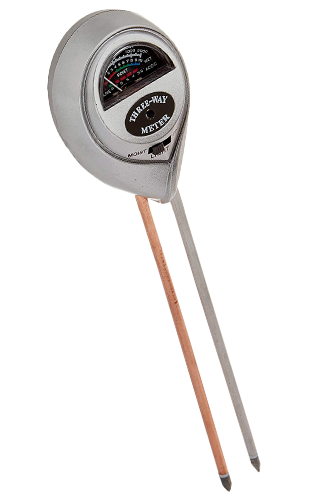
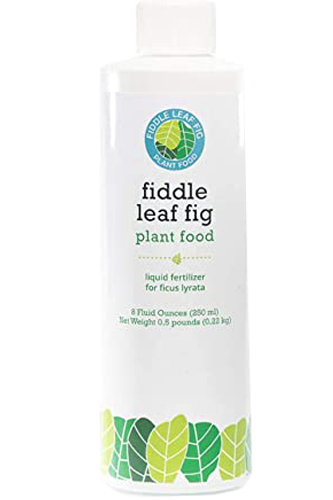
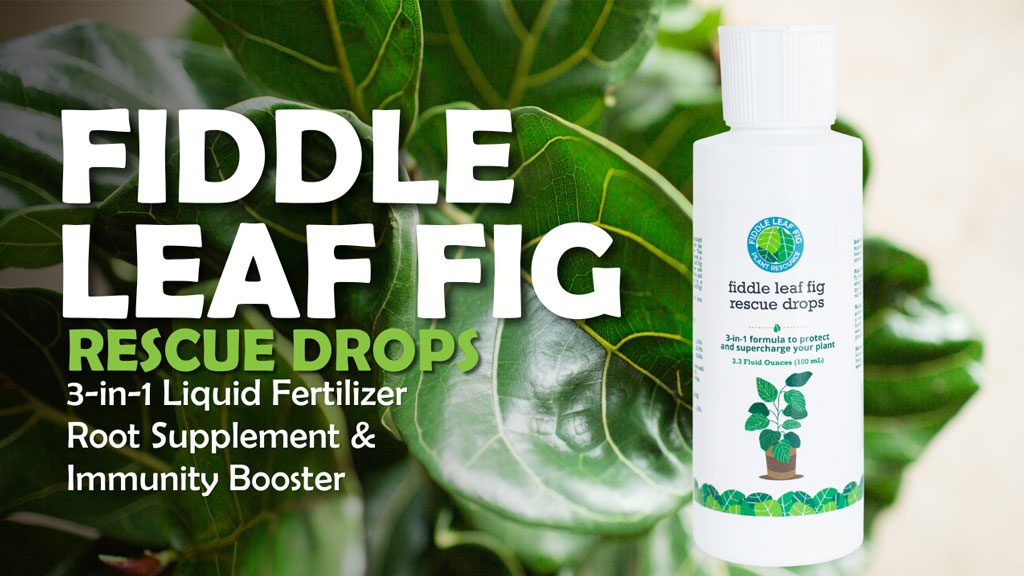










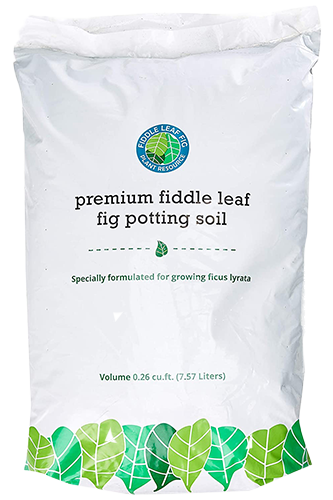


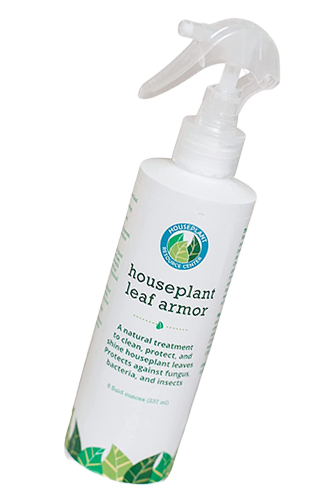
Can I purchase this guide as a paper back book? Bev
Yes, here you go! https://www.amazon.com/Fiddle-Leaf-Fig-Expert-Growing/dp/1719216150/ref=as_sl_pc_qf_sp_asin_til?tag=indigomarke0c-20&linkCode=w00&linkId=2b835bd3696fa77bc64fad6f5cd26395&creativeASIN=1719216150